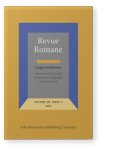Vol. 56:2 (2021) ► pp.159–176
El espíritu de la colmena
sobre monstruos y otras manifestaciones de la fuga y la supervivencia
All the main characters in The Spirit of the Beehive show some type of connection with marginality and survival. They are either at the margins of social convention or survivors of harrowing particular historical events (Spanish Civil War). This connection reveals itself in a conspicuous and distinct fashion through the monster figure. This article intends to highlight the centrality of the concept of monstrosity in the film as well as emphasize the socio-political significance of these manifestations of the monster. It is, therefore, a reading of the monster figure in Erice’s film as a political and social agent both in the specific context at the outset of Franco’s dictatorship and in the more abstract context of the challenging of power structures.
Article outline
- 1.Teoría del monstruo
- 2.Frankenstein: El monstruo en Shelley, Whale y Erice
- 3.Manifestaciones masculinas de la monstruosidad
- 4.Manifestaciones femeninas de la monstruosidad
- 5.El verdadero monstruo de la prohibición: La colmena
- Notes
-
Obras citadas
Article language: Spanish
